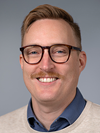Subribe to the seminar e-mail list
Subscribe to mathfoundations-ai-seminar@lists.umu.se for notification of future seminars.
Send an email to sympa@lists.umu.se and in the subject/heading of the email write: subscribe mathfoundations-ai-seminar
Leave the email blank.


